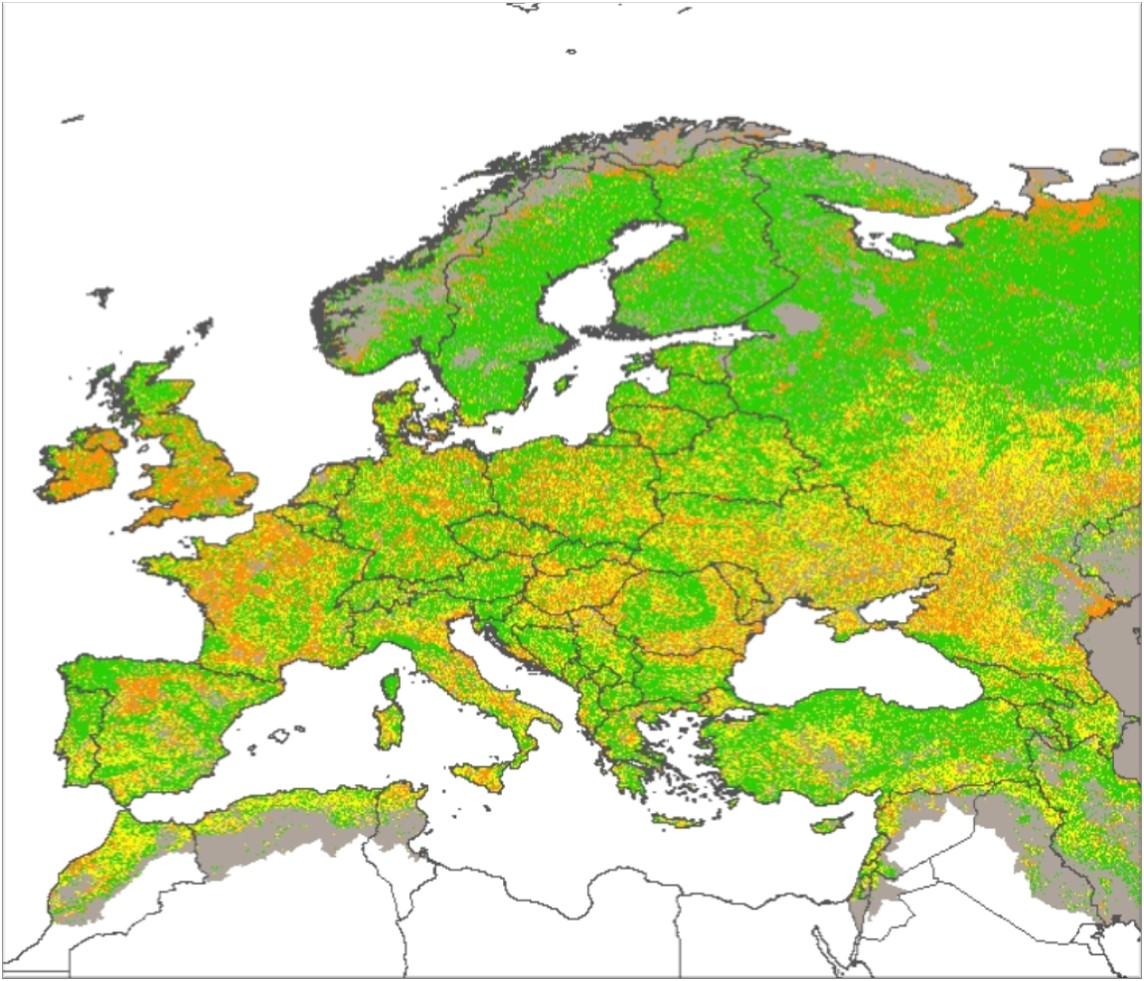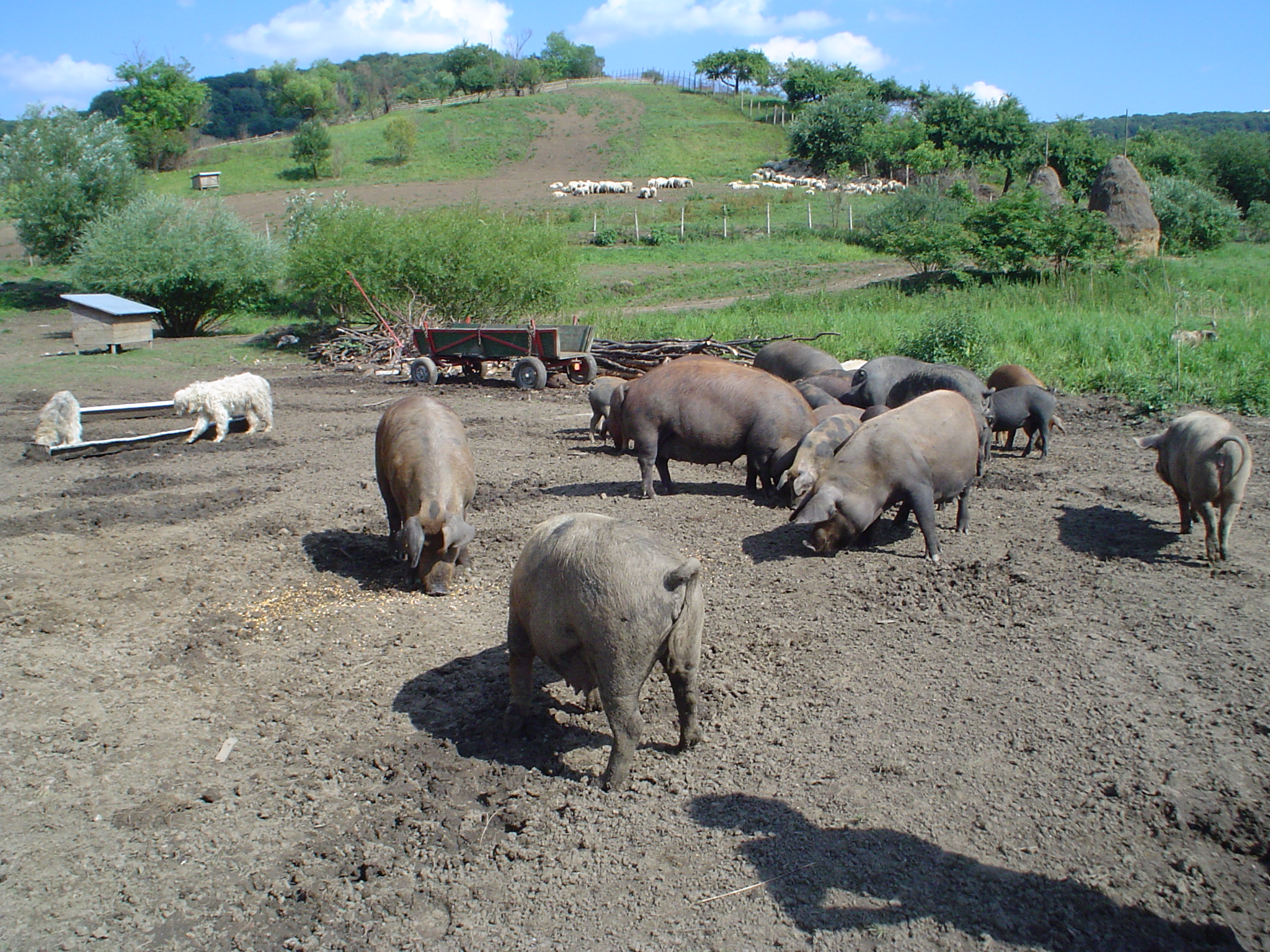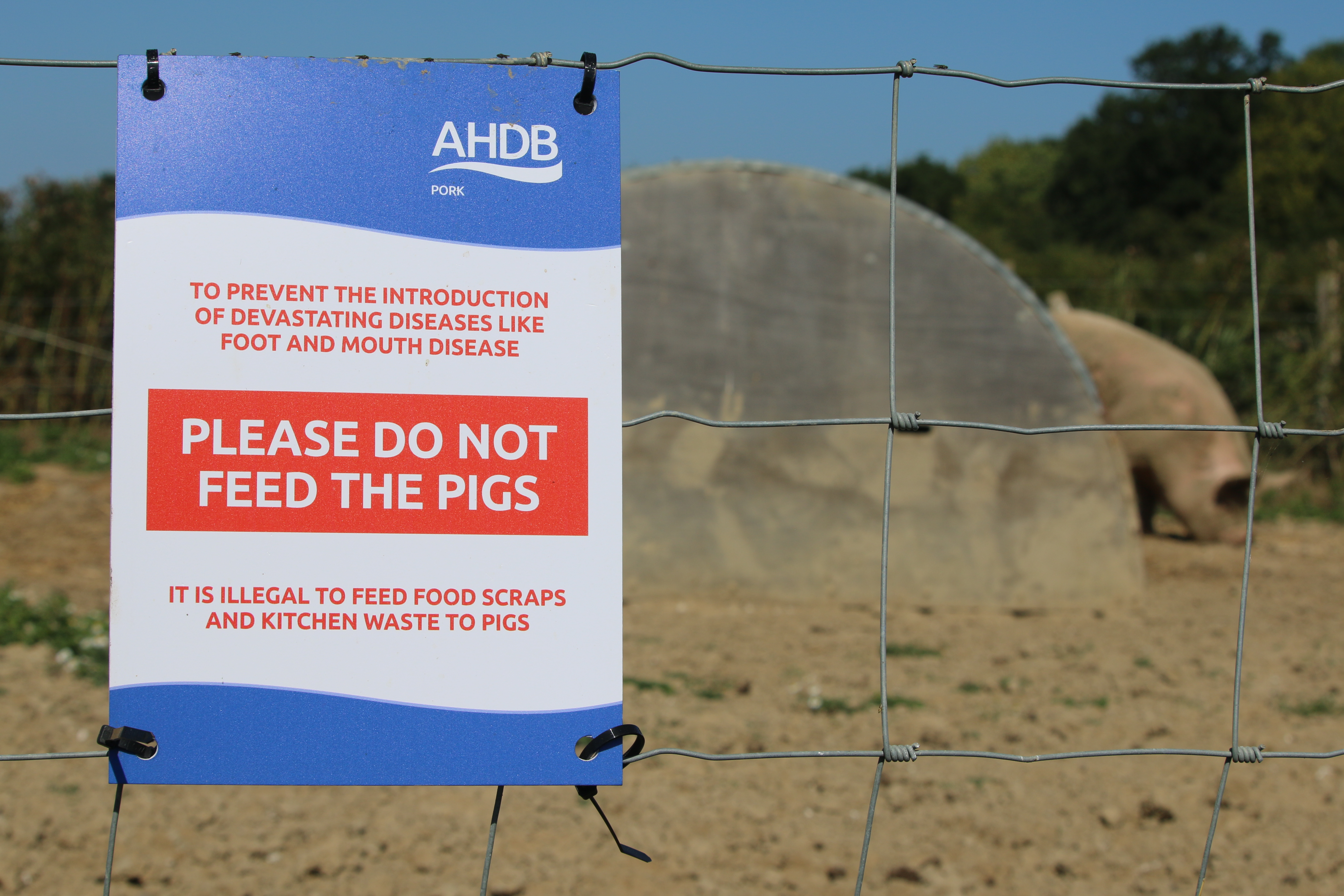



The role of outdoor farms in the spread of African swine fever in Europe
A variety of outdoor pig production systems are present in the EU but are these more open systems playing a part in the movement of African swine fever in Europe?Outdoor farms are emerging in Europe due to the increase in the number of organic farming systems (Früh et al., 2014). This increment responds to a specific consumer demand for sustainable food products, promoting more sustainable farming practices and contributing to the protection of the environment and improved animal welfare.
Depending on the country and local practices, outdoor pig production may vary from those with the highest biosecurity levels, to free-ranging herds where biosecurity is absent.
Considering the current ASF epidemiological situation in Europe and the involvement of wild boar in the spread of the disease, outdoor pig farming is considered a practice at risk in the European Union. Therefore, in adopting an eradication strategy against ASF, preventive measures need to be established to control the possible pathways of ASFv transmission between domestic pigs and from wild to domestic pigs.

Current epidemiological situation for African swine fever (ASF). Notification on domestic pig (in purple) and wild boar (in blue) are shown (2014-2019, ADNS data). © ASF-STOP
In the EU, there are currently two main clusters of ASFv infection. One in Sardinia, where ASF is endemic since 1978, the other in the eastern part of the EU Europe, next to the endemic ASF area of Eastern Europe, and Belgium.
Due to the climatic conditions in the Eastern EU countries, keeping pigs outside is not a common practice. This is why in that epidemiological context, outdoor pig farms are not playing a relevant role in the spread of ASFv. In these countries, ASF entrance and subsequent local spread is mainly driven by wild boar and long distance spread has been associated with human interaction (Gallardo et al., 2014; Pejask et al., 2014). The highest risk of domestic outbreaks is associated with areas where commercial farms are surrounded by high densities farms with inefficient biosecurity. It may lead to huge economic losses, largely due to the resulting trade restrictions. Special attention should be paid to natural landscapes where wild boar populations play an important role in maintaining disease infectivity and in buffer monoculture areas where the opportunities to transmit the virus to domestic pigs through direct or indirect contacts are higher (Bosch et al., 2016).

Landscapes where wild boar populations are present: natural areas (green), culture areas (including buffer monoculture areas around natural areas) (orange and yellow) and unsuitable areas (grey). Map adapted from Bosch et al (2016). © ASF-STOP
On the contrary, grazing free-range herds in Sardinia have been considered a major obstacle to disease control. Indeed, in Sardinia, raising pigs outdoors is a traditional practice and these herds can range from 2 to 300 pigs. Pigs graze on vast, publicly-owned areas during the entire year or, in case of partial confinement, the animals graze on public areas during the fall, to utilise acorns produced by evergreen oaks, and are kept indoors for the rest of the year. This type of practice, which was very common in the Central‐Eastern region of the island, has traditionally been considered a risk for ASF occurrence in Sardinia (Mur et al., 2014).

© Aleksander Dragnes
The role of ticks associated with outdoor farms
The soft tick species associated with pig farming Ornithodoros erraticus (Acari: Argasidae) are able to act as a reservoir for the African swine fever virus consitituting the only biological vector of ASF virus in Europe (Boinas et al., 2014). Experimentally it has been evidenced that such ticks are able to remain infective for more than five years after the removal of infectious hosts (Boinas et al., 2011). At the time of endemicity in Spain and Portugal (1960’s-1980’s), there were a number of traditionally constructed pig housing that favoured the presence of O. erraticus in cracks in adobe or between the stone of walls (Wilson et al., 2013).
To date, no tick involvement has been evidenced in the epidemic in Eastern Europe and in Sardinia. There is no soft tick species in the Balcans region. In Serbia, five hard tick species have been identified (Dermacentor marginatus, D. reticulatus, Haemaphysalis punctata, H. concinna and I. ricinus(Tomanović S et al., 2013) but currently there is no evidence that they play an active role in the spread of ASFv.
The current EU legislation recommends to restock after an ASF outbreak as soon as 40 days in the absence of vectors, or not before six years if vector involvement in ASF transmission is suspected (CD 2002/60/CE). Animals for restocking should be tested against ASF virus and antibodies to ensure they are not infectious.
| References | ||||
|---|---|---|---|---|
| Boinas, F.; Ribeiro, R.; Madeira, S.; Palma, M.; de Carvalho, I.L.; Nuncio, S.; Wilson, A.J. | ||||
| (2014) | The medical and veterinary role of Ornithodoros erraticus complex ticks (Acari: Ixodida) on the Iberian Peninsula.. Journal of Vector Ecology | 39 (2): 238-48 | ||
| Boinas, F.; Wilson, A.J.; Hutchings, G.H.; Martins, C.; Dixon, L.J. | ||||
| (2011) | The persistence of African swine fever virus in field.infected Ornithodoros erraticus during the ASF endemic period in Portugal.. PLOS One | |||
| Bonneau, M.; Antoine-Ilari, E.; Phatsara, C.; Brinkmann, D.; Hviid, M.; Groes Christiansen, M.; Fàbrega, E.; Rodriguez, P.; Rydhmer, L.; de Greef, K.; Edge, H.; Dourmad, J-Y.; Edwards, S. | ||||
| (2011) | Diversity of pig production systems at farm level in Europe.. Journal on Chain and Network Science | 11 (2): 115-135 | ||
| Borell, E.V; Sorensen, J.T. | ||||
| (2004) | Organic livestock production in Europe: aims, rules and trends with special emphasis on animal health and welfare.. Livestock Production Science | 90 (2004) 3–9 | ||
| European Commission | ||||
| (2018) | Working document on Strategic approach to the management of African Swine Fever for the EU. | SANTE/7113/2015 - Rev 10. | ||
| Früh, B., Bochicchio, D., Edwards, S., Hegelund, L., Leeb, C., Sundrum, A., Werne, S., Wiberg, S. and A. Prunier | ||||
| (2014) | Description of organic pig production in Europe.. Organic Agriculture | 4:83-92 | ||
| Mur, L; Atzeni, M; Martínez-López, B; Feliziani, F; Rolesu, S; Sanchez-Vizcaino, JM | ||||
| (2013) | Thirty-five-year presence of African Swine Fever in Sardinia: history, evolution and risk factors for disease maintenance.. Transboundary and Emerging Diseases | e165-e177 | ||
| Prodanov-Radulović J, Pušić I, Živkov-Baloš M, Polaček V, Stojanov I, Marčić D, Bojkovki J. | ||||
| (2018a) | Application of biosecurity measures in swine production - field observations.. International Scientific Conference on Green Economy and Environment protection. | pp.136-137 | Book of Abstracts, Belgrade, Serbia | |
| Prodanov-Radulović J., Polaček V., Molnar T., Živulј A., Martinov R., Filipović S., Šubarević N., Tomić A., Debelјak Z. | ||||
| (2018b) | Determination of existing biosecurity risk on pig farms. | pp.100-101. | Book of abstracts, XX epizootiological days, Beograd, SVD | |
| Tomanović S, Radulović Ž, Milutinović M, Čakić S, Mihaljica D, Tselentis Y, Psaroulaki | ||||
| (2013) | Analysis of pathogen co-occurrence in host-seeking adult hard ticks from Serbia.. Experimental and Applied Acarology | 59, 3, pp 367–376 | ||
| Wilson, A.J.; Ribeiro, R.; Boinas, F. | ||||
| (2013) | Use of a Bayesian network model to identify factors associated with the presence of the tick Ornithodorus erraticus on pig farms in southern Portugal.. Preventive Veterinary Medicine | 110 (2013): 45-53 |










